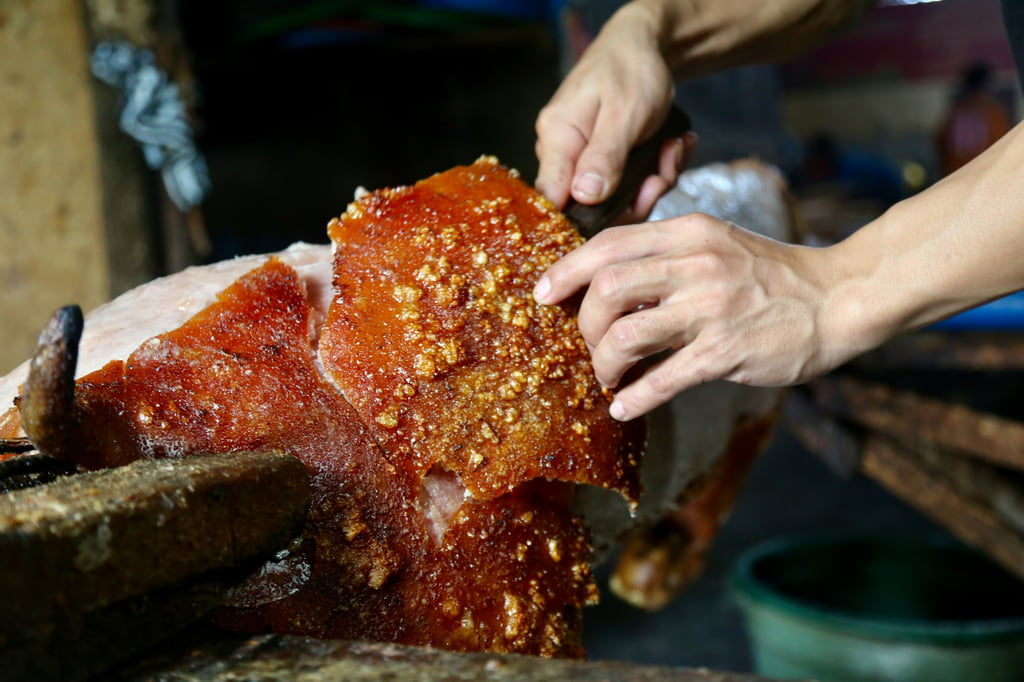Anthony Bourdain loved it: where to eat the best spit-roasted pork in Bali and why the chef called it ‘the best pig I have ever had’
- ‘Babi guling’ is what Balinese call spit-roasted pig, a dish the late food legend Anthony Bourdain rated as the most succulent pork he had ever tasted
- Chefs reveal what makes Bali’s version world-renowned, from the spice paste smeared on the pig to the flavour and mouth feel of the different cuts of meat

At 1am, when the only sound that can be heard in the village of Pengayehan, on Bali’s west coast, is a dog barking, Adik Dika walks towards his pig with an eight-inch (20cm) knife in his hand.
The animal squeals as he cuts its throat before draining the blood into a bucket he will later use to make one of the world’s most unusual salads.
He will then spend hour upon hour turning it on a spit while basting it with a blend of coconut oil and turmeric until the skin turns golden brown and becomes as crisp as peeling paint.

“This is the best pig I have ever had. Absolutely the best,” Bourdain said while filming in Bali, in Indonesia, in 2006. “You think even the finest French chef could ever come up with anything as delicious or as beautiful as this?”